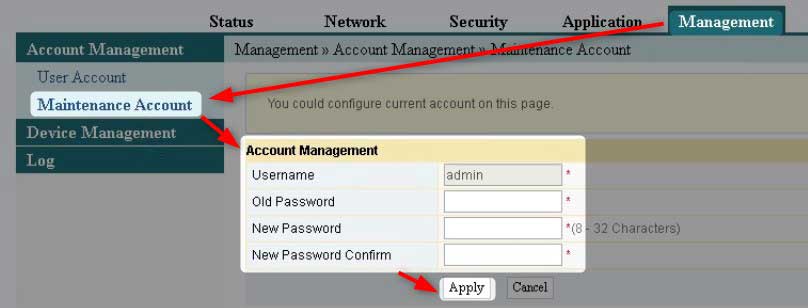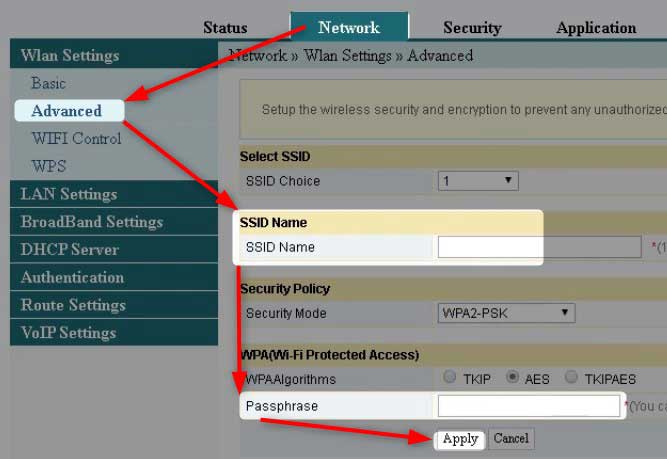If you have a FiberHome wireless router and you want to access its settings you need to learn the FiberHome router login steps. This article will show you the exact steps you need to apply in order to login and also provide the default login details (IP address, admin username and password).
After you login to the router admin dashboard you will have the option to modify many different settings. The first three default settings we recommend changing as soon as possible are changing the default admin password, and changing the default WiFi network name and password. Applying just these three changes will make your network safer from unauthorized access.
So, let’s see what you need before you login to your FiberHome router.
CONTENTS
What You Need:
- FiberHome router
- Local network access over WiFi or the network cable
- Computer, tablet or smartphone
- Default FiberHome router settings
What Are The Default FiberHome Router Login Details?
Most routers today come with some predefined default settings that are practically the same for all routers coming from a specific manufacturer. These default details are printed on a label that can be found on the router and these need to be changed during the initial setup stage. However, make sure to have the default login details written somewhere. You will need them in case you have to factory reset the wireless router. They will allow you to login to the router and set it up again.
Default IP address: 192.168.1.1
Default username: admin
Default password: admin
How To Login To FiberHome Router?
If you have prepared everything you will see the admin dashboard in no time.
STEP 1 – Connect Your Device To The Network
No matter whether you are using a tablet, computer or a smartphone to access the router settings, the device needs to be connected to the local network. You can connect it over WiFi or if you can connect the network cable directly, it is even better. This type of connection is more stable and, in some cases, you won’t need to enter the admin username and password. For example, AT&T U-Verse routers give you direct access to the admin dashboard if you are connected using an Ethernet cable.
STEP 2 – Open A Web Browser On Your Device
All the devices we use today have a pre-installed web browser. You can lunch that one or any other browser you are using most of the time. This will help us see the router’s web-based interface and make the entire router configuration much easier. Please make sure that the web browser you are using is up-to-date.
STEP 3 – Enter The FiberHome Router IP In The Address Bar
After you launch the web browser you need to enter the default FiberHome router IP 192.168.1.1 in the address bar. Press enter if you are using a computer or tap on Go, if using a smartphone or a tablet. If the IP is correct, you will be asked to enter the admin username and password.
However, if you get an error message check whether your device is connected and follow this guide to check if the router IP is correct.
STEP 4 – Enter The FiberHome Router Admin Password

When the new window opens, enter the default admin username and password in the required fields. If your ISP or someone else hasn’t changed these you can type admin as a username and a password. Press Login.
If the admin login details have been changed you can contact your ISP and ask for the admin login details.
NOTE: The admin username and password are case-sensitive.
STEP 5 – You Can Browse and Tweak The FiberHome Router Settings
After you enter the admin username and password you should be redirected to the Device Information Page. You can see different settings in the horizontal menu at the top and when you click on one of them, there is an additional menu on the left. Feel free to browse through the settings, but we recommend you to create a backup of the router settings before you decide to make any changes.
How To Change The FiberHome Router Admin Password?
Changing the router admin password is another thing we recommend, but it is important to save the default admin login details as well. You will need these in case you forget the custom ones.
The main reason to change the default admin password is because whoever has access to your network can easily find this default login detail and access your router settings without you knowing about it. As a result, you can be blocked out of your wireless network, the WiFi and admin password can be changed, and practically the settings can be messed up so much that your network becomes unstable or completely non-functional.
To change the FiberHome admin password you need to login to the router first.
Then click on Management in the menu on the top. Then in the left-hand menu click on Maintenance Account.

In the Account Management section, you will have an option to change the FiberHome router admin username and password.
Enter the new admin login details and click on Apply to save the settings.
You should be logged out of the router admin dashboard once you save these settings. Go back and login with the new admin login details.
How To Change The FiberHome Router WiFi Settings?
Changing the WiFi name and password is pretty easy and straightforward. It is even recommended to change the wireless password every now and then so pay attention to this step.
After you login to your FiberHome router click on Network in the horizontal menu at the top. After that in the menu on the left click on Advanced in the WLAN Settings section.

Then in the SSID Name section, in the SSID Name field enter the new wireless network name.
Then in the WPA (Wi-Fi Protected Access) in the Passphrase field enter the new wireless password.
Make sure the password is strong and unique and at least 8 characters long. 10-12 characters is preferred.
And finally click on the Apply button to save the changes.
Final Words
Now you know how to login to the FiberHome router and apply some basic security tweaks. We are sure that the next time you want to access the router settings you won’t need any guidance. Just make sure to have the default and the new login details written somewhere. You will definitely need them again.
Besides the basic security tweaks there are some other ones you can apply, and there is even more. If you are into gaming you will appreciate the Port Forwarding feature, if you have kids check the Parental controls, if you are worried about your network security check the firewall, disable or enable WPS and so on. Just don’t forget to make that backup we have mentioned before. It will be much easier to restore the settings in case something goes wrong.

Hey, I’m David. I’ve been working as a wireless network engineer and a network administrator for 15 years. During my studies, I also worked as an ISP field technician – that’s when I met Jeremy.
I hold a bachelor’s degree in network engineering and a master’s degree in computer science and engineering. I’m also a Cisco-certified service provider.
In my professional career, I worked for router/modem manufacturers and internet providers. I like to think that I’m good at explaining network-related issues in simple terms. That’s exactly what I’m doing on this website – I’m making simple and easy-to-follow guides on how to install, set up, and troubleshoot your networking hardware. I also review new network equipment – modems, gateways, switches, routers, extenders, mesh systems, cables, etc.
My goal is to help regular users with their everyday network issues, educate them, and make them less scared of their equipment. In my articles, you can find tips on what to look for when buying new networking hardware, and how to adjust your network settings to get the most out of your wi-fi.
Since my work is closely related to computers, servers, and other network equipment, I like to spend most of my spare time outdoors. When I want to blow off some steam, I like to ride my bike. I also love hiking and swimming. When I need to calm down and clear my mind, my go-to activity is fishing.
